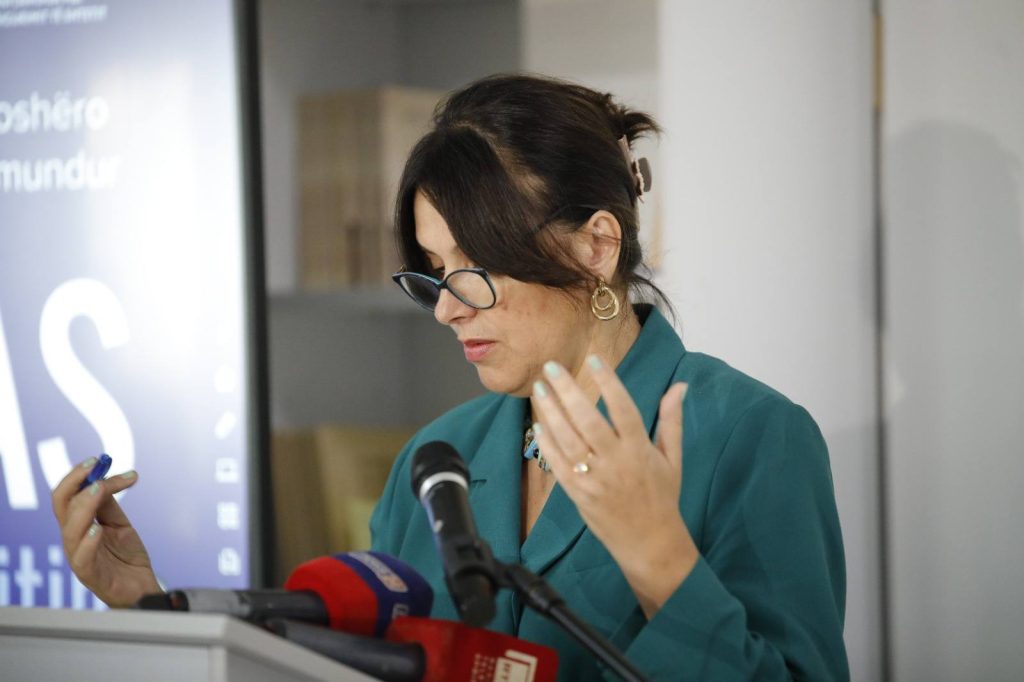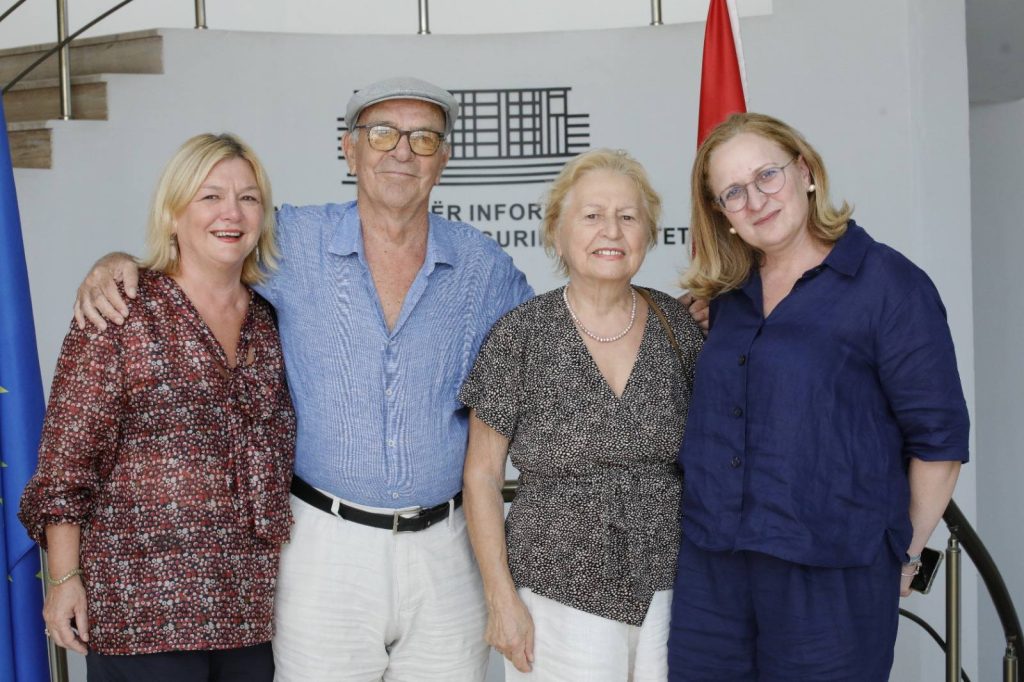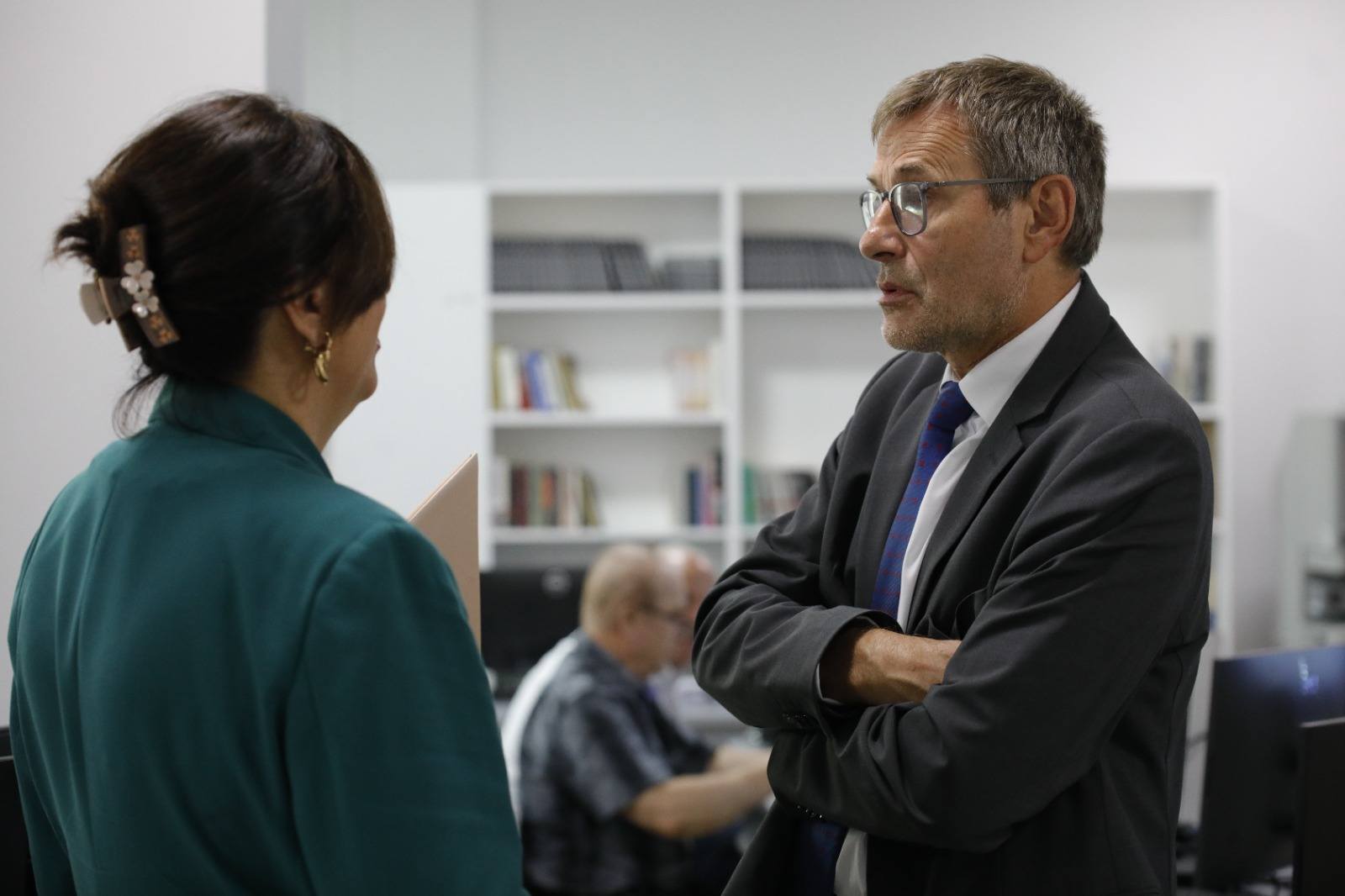Tirana, August 22, 2025 – On the eve of the European Day of Remembrance for the Victims of Totalitarian Regimes, the Authority for Information on the Former State Security Documents organized the commemorative event “Valiasi – from camp to commemoration.”
The event brought to the public stories of survival, testimonies of the internees, and newly uncovered archival documents. The Authority’s documentary “The Other Side of Valiasi” was screened, built upon the testimonies of survivors and the descendants of the interned families.
The images and testimonies revealed the reality of the forced labor camp, where, according to documents from 1950, 820 people were interned, among them 372 children and dozens of women.
The Chairwoman of the Authority, Dr. Gentiana Sula, stated: “This camp, where more than half of those interned were children, remains a symbol of collective punishment and the trauma of our society.
The wounds of Valiasi, Kodër-Kamza, Tepelena, Porto Palermo, Savra, Grabian, Spaç, and Burrel are not individual wounds. They are wounds of our society, passed down from generation to generation. Scholars and psychologists remind us that trauma is not healed by covering it up, but by acknowledging it. That is why, through this activity, we choose to remember, to share, and to recognize the truth.
Therefore, this documentary, as an important source for the Learning from the Past Platform, will continue to inform and invite reflection on what we inherit from the past and on how we keep memory alive — not only for those of us living today, but also for the generations to come.
Our society needs not only to honor the victims, but also to learn to recognize the pain of others, so that yesterday’s trauma does not become a source of division today and tomorrow.
Mr. Ethem Fejzollari, chairman of the Anticommunist Association and one of the surviving witnesses, shared his memories as a child interned in the Valiasi camp.
“Valiasi was a camp 5–6 meters long, surrounded with barbed wire. Armed guards stood above, and the entire area was enclosed. The camp was one large hall, similar to the one in Kamza. The difference was that in Kamza a water tanker would arrive every day, and the internees could get clean water. In Valiasi, there was only a single well in the middle of the camp, without stones around it, which would collapse daily. People filled their buckets with muddy water. Those who took care would gather firewood and boil it before drinking. Most, however, drank it as it was, caught dysentery, and were taken to hospitals,” said Ethem Fejzollari in his testimony.
Mr. Wojciech Unolt, Chargé d’Affaires of the Polish Embassy, stated:
Poland knows well the pain of this history. Our people went through double suffering — from the barbarity of the Nazi occupation to the repression of the communist dictatorship. Our experience teaches us that memory is the most powerful tool for building a fairer and freer future.
Therefore, we strongly support the Authority’s effort to bring to light the testimonies of survival and to transform individual remembrance into collective memory. This is also the very meaning of the European Day of Remembrance for the Victims of Totalitarian Regimes—a day born from the initiative of countries that knew firsthand the wounds of communism and Nazism, among them Poland.
Mr. Gjergj Marku, member of the Authority, stated:
“Today we are here to remember the Valiasi camp and the pain carried by the testimonies of those who suffered there and in other internment and forced labor camps in Albania. Our remembrance today is an act of honor for all who endured these hardships. Only if these testimonies are heard and respected can ‘wounds be healed,’ and our society move forward with courage and memory.
Mr. Albert Nikolla stated:
"Testimonies speak"—this is not just an expression, but a call to listen to the voices of the men, women, and children who suffered and survived. They do not speak to keep us captive to the past, but to help us build a fairer future by acknowledging and respecting the truth."
The Valiasi camp, like Tepelena, Porto Palermo, and all other internment camps, remains a living testimony to the injustices of the totalitarian regime. There, beyond the denial of freedom, lives were destroyed, hopes were extinguished, and entire generations were scarred.
A thought-provoking message was also delivered by psychiatrist and psychotherapist Mr. Neli Demi through a video message on the topic of inherited trauma and the need to process memory.
'"If we do not care for the wounds of the past, they continue to poison the present. But when we remember with dignity, when we listen with respect, when we make space for storytelling and justice, memory becomes a tool for healing. Restorative justice is the path that teaches us that history is not just a closed book, but an ongoing process. It reminds us that the past may remain heavy, but the present has the power to transform it into lesson and strength."
This activity was organized in collaboration with the Anticommunist Association of Politically Persecuted Persons and was followed by discussions with family members and survivors, turning the testimonies and documents into a shared memory of Albanian society.
Historical memory of the Valias camp
Historical documents show that the Valiasi camp was established in 1945, initially for German prisoners of war, and later for the families of fugitives or convicts, mostly women and children. It was closed in 1952, with the internees being transferred to other camps.
According to archival documents from 1950–1952 (Fund 4, First Directorate of State Security), the number of internees ranged from 376 to 820, most of whom were women and children. Many lived in inhumane conditions, with minimal food, lack of hygiene, and were often afflicted by diseases such as malaria and tuberculosis.
In a CIA document dated May 12, 1951, the camp conditions are described as “miserable”: people lived in straw huts, received only 500 grams of bread per day, and had no clean water. In another contemporary testimony, the regime itself defined Valiasi as a concentration camp.
Documentary Authors:
Artistic script and direction: Rovena Rrozhani
Interviewer: Brunilda Çërraga
Cinematography, photography, and editing: Dorian Zanaliu
Documents from #arkivaaidssh: Anton Dukagjini
Archival documents read and processed by: Jonel Hibo













